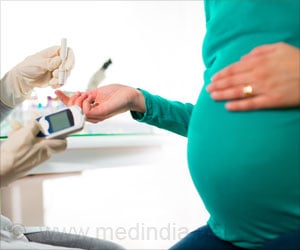Gestational diabetes (diabetes during pregnancy), an independent risk factor for fetal hypoxia during labor can be monitored using intensified Cardiotocography (CTG) for early prevention.

The extra blood glucose moving through the placenta result in high blood glucose levels in fetus. This causes fetal macrosomia, or excessive growth of the fetus.
Macrosomia causes fetal hypoxia, that is lack of oxygen in the fetus, increasing the labor-related complications for both the child and the mother.
"The risk of hypoxia and the resulting risk of poor condition in newborn infants was nearly seven-fold in the fetuses of mothers with gestational diabetes compared to the fetuses of non-diabetic mothers”, says researcher Mikko Tarvonen.
Based on the study findings, intensified Cardiotocography (CTG) monitoring during labor must be performed for women with gestational diabetes for early detection of fetal hypoxia.
The treatment and monitoring of gestational diabetes should focus on the mother, the fetus and the child to prevent fetal hypoxia and enhance delivery safety.
Advertisement
Advertisement















